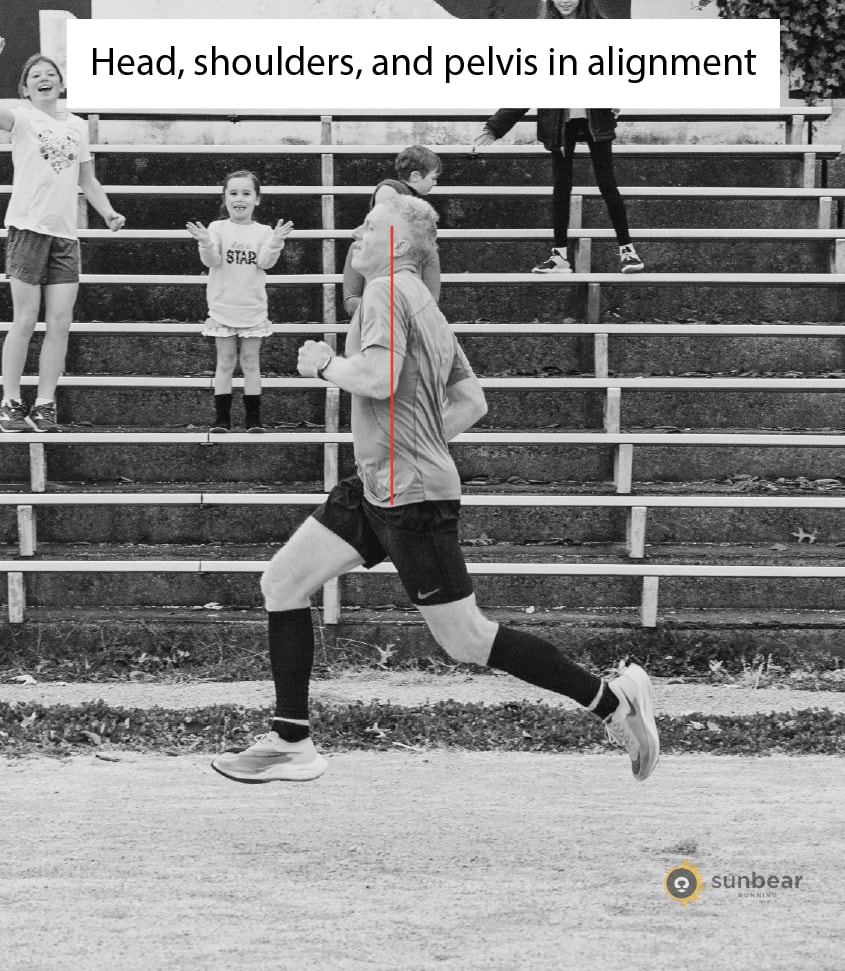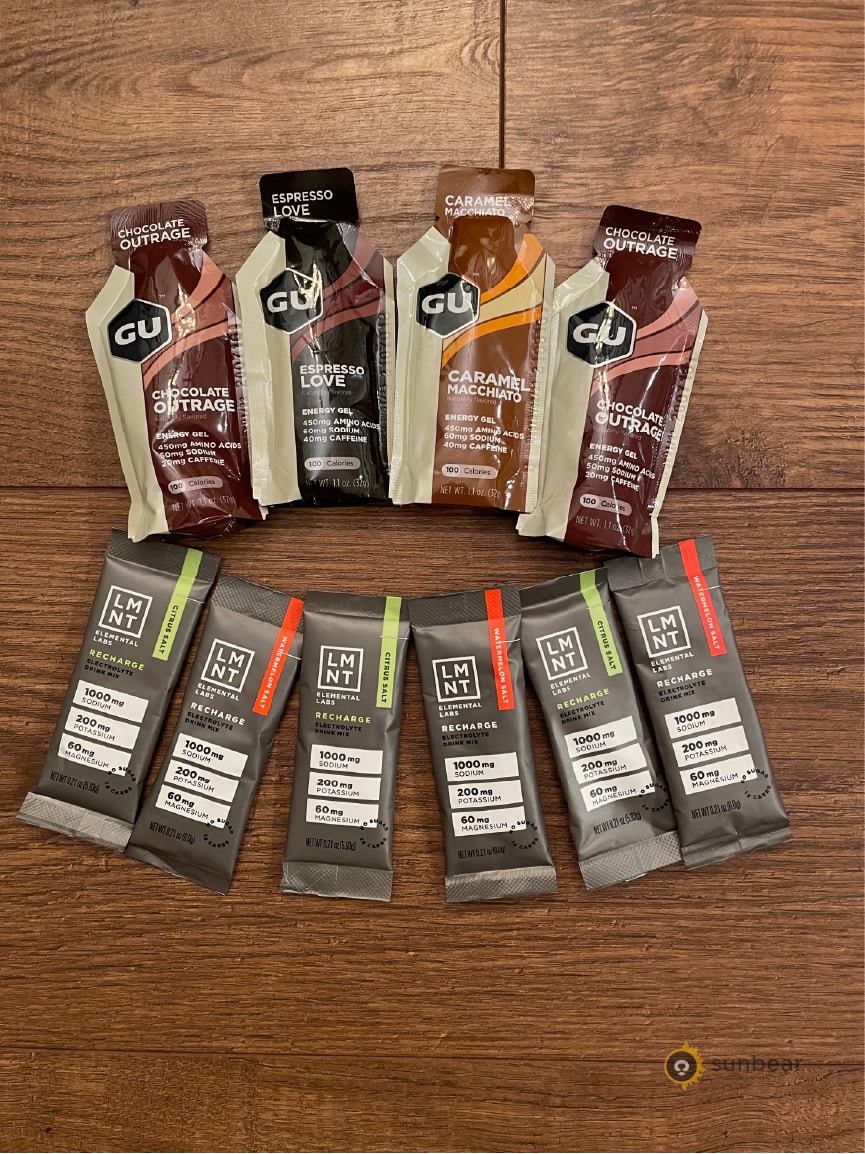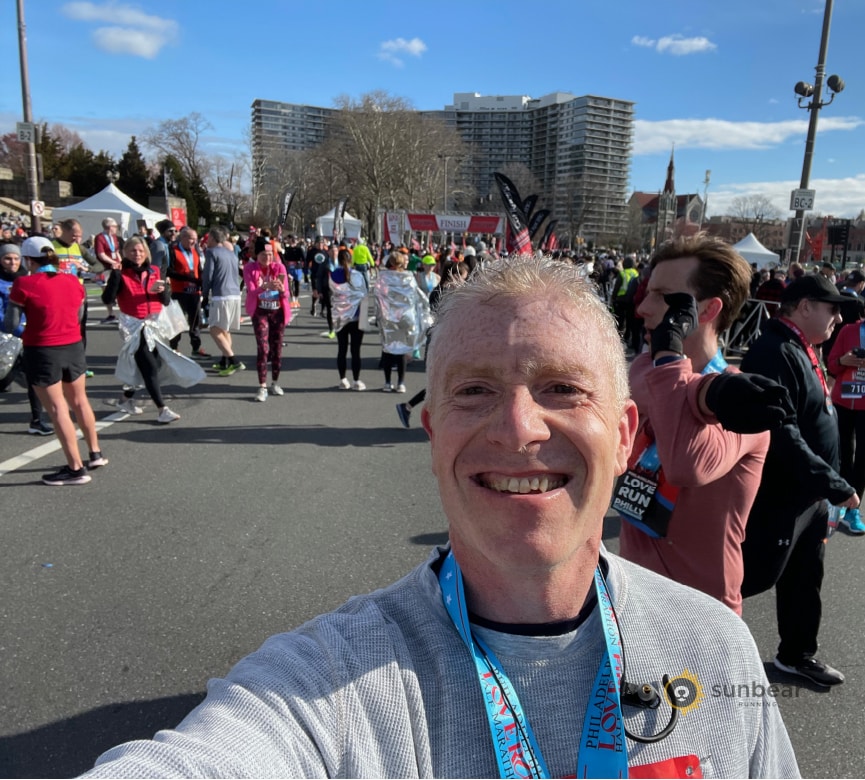Whether you’re a seasoned runner or a newbie, you may be wondering what to do while running – mile after mile – as time ticks by. My Nike Run Club app shows that I’ve completed 985 runs, totalling 465 hours, 11 minutes, and 57 seconds over the past two years with the app. I’ve found these to be the best ways to occupy your mind on a run:
- Check in on your running form (posture, foot strike, cadence).
- Check your hydration and nutrition. Is it time for a sip or gel?
- Focus on doing your best in the current leg of your run or race, and don’t worry about the overall distance.
- If you are racing, focus on closing the gap between you and the runner ahead.
- Use positive self talk. Tell yourself, “keep it steady, you’re doing great”.
- Use the run to shed negative emotions or stress. Grab that negative thought, then “run it out”.
- Smile, especially when it gets hard. Your mind will adapt to match your expression.
- Listen to music, audio books, or podcasts to motivate or distract you
- Appreciate your surroundings. Notice the sky, leaves on the trees, and other beauty around you.
- Stay safe. Always be mindful of surroundings. Watch for traffic and trip hazards.
- Be grateful that you have the time and ability to run right now.
I like to cycle through thoughts in this order while running: first check my internal physical state. Next, consider my external surroundings (although always be mindful of safety).
If I’m racing, I’ll be highly attentive to my cadence, form, and breathing. But if I’m on a long, easy run or looking to disconnect, I might focus on the trees, clouds, or music to distract myself.
Here is the detailed run-down:
What to Do While Running: Focus on Your Physical State
Checking in on your physical state can help ensure that you are running efficiently, safely, and maximizing your performance.
Check Your Running Form
Quick caveat that these tips are for running distances, not sprinting. Some but not all of these apply to sprinting.
1. Check your posture.
Posture is a critical ingredient to solid running form, and ultimately running economy. Namely, your head, shoulders, core, and pelvis should all be in alignment.
Good posture includes keeping the head tall – eyes gazing out ahead and not looking down. The should not be a forward bend, as this limits ability to pick up the knees and reduces running efficiency.
Build a body that supports good posture. Many runners regularly include core strength exercises in the weekly work-out plan to help with posture in the longer term.

2. Arms and hands relaxed and driving forward.
Arms should be bent about 90 degrees or less at the elbow. When the arm swings down, the hand is in the area of the hip, like a quick-draw cowboy. The upswing should generally be forward, and not side-to-side. Hands shouldn’t cross the centerline of the body.
Hands should be closed and relaxed. Imagine you are holding a baby bird or butterfly – don’t crush it! But don’t let it escape.
3. Keep a light, quick cadence and foot-strike.
I check that my feet are landing beneath me, propelling me forward. Some runners imagine “pawing” the ground.
Think carefully if your feet are sticking to the ground. You might be out of fuel (see nutrition next), but your body may be telling you to end this part of the workout (time for some stretching and cool-down). If you find yourself tiring easily, consider replacing one or more workouts with strength exercises to build muscle, and also increase recovery time between runs.
Check Your Hydration and Nutrition

Aside from running form, check in on hydration and nutrition – especially on long runs or longer work-outs.
Hydration – aside from politics, is anything more debated!? Let’s start with the premise that everyone is different, and you’ll need to experiment a bit to see what works best for you. That said, I check in on your hydration with the following questions:
- Am I thirsty? Stating the obvious – this is my body telling me to hydrate.
- If I have muscle cramping, it could be a signal that I am dehydrated and running low on electrolytes.
- If I hydrate without electrolytes, I find that it can result in a miserable run – bloating, nausea, and cramping may set in. I use an electrolyte that includes sodium, magnesium, and potassium to avoid cramping and help with performance.
- MedlinePlus provides helpful signs of dehydration.
- Note that the body is not fully hydrated until the intracellular fluid is replenished, which happens last (thirstiness stops before intracellular fluids are replenished).
Nutrition
- The more intense my pace, the more I think about replenishing glycogen (carbs). That said, even on longer/slower runs, I know that my body is burning glycogen (energy may be derived from fat or glycogen; fat often contributes more when the pace is slower)
- I needed to try various timing and fuels to determine what works best for me. GU is popular and recommends on the label to consume one pack 5 minutes before a run, and every 45 minutes during the exercise bout.
What to Do While Running: Focus on External Factors
Stay Safe
Be aware of your surroundings. Getting hit by a car or turning an ankle by stepping in a hole could take you out of the running game for a long time or possibly permanently. Choose bright and reflective clothing to help others see you.
Appreciate Your Surroundings
You may find that gratitude can provide extra motivation during your run. Scan your environment for something small to appreciate – the leaves on the trees, the sky, a bird or squirrel. You are lucky to be out on this run today – you could be in a drab cubicle or worse.
Running with Others
Running with friends can help keep you motivated, and with 60 million self-identified runners in the US, it shouldn’t be hard to find some. If your friends don’t enjoy running, simply call your local running store. Many have meet ups with runners of varying paces, and you’ll be amazed at how quickly a friendship can grow while running together.

Racing
If you are near another runner at a similar pace, focus in on their steps. Match their cadence, and position yourself a couple of paces behind them (this “drafting” technique is well known in the cycling world). Simply focus on keeping the same distance between you and the runner ahead. Let them “pull” you along and free your mind from thinking about pace. If you watch elite marathon and other runners, you’ll note that they use pacers in a similar way.
Alternatively, particularly in a race, spot a runner up ahead. Focus in on slowly “closing the gap” between you and the runner ahead. Reel them in like a fish, a little bit at at time.
What to do while running? Internal vs External Focus – It depends what you want out of your run.
In my experience, my fastest times result from a laser focus on my running form, pace, breathing, and cadence. I will revel in the pain of the breathing, screaming muscles, sweat, and other factors – allowing my mind to fully delve into any pain and discomfort. I tell myself that I’ll only feel this for a limited time, aiming to hold the pace. I generally only adopt this internal mindset on anaerobic (very fast paced) runs. I find the mindset especially helpful when racing.
On the other hand, when I focus on external factors, the run breezes by without my noticing. I might appreciate the sky that day, or engage in a conversation with a fellow runner. This external focus distracts me from the physical sensations of running. I find this external focus most useful on long runs, recovery runs, and generally slower paced runs. It may also be helpful for newer runners, trying to get through the workout.

What does this mean for you?
If your goals are enjoyment over performance, you may wish to distract your self with music and scenery. When racing or running for performance, you’ll want to focus on cadence, breathing, form, and other internal factors.
What to Do While Running? Consider Other Motivational Factors
Use Your Emotions
Emotions are an extremely powerful way to motivate your run. These thought exercises have helped my performance:
1. Your Last Run?
Life is fleeting, and you only have so many runs in your life. There will be a last time that you run, a last time you take those steps down your favorite path or route. And you may not know ahead of time which run will be your last.
Thoughts of death, accidents, and other circumstances seem morbid, but can also help you appreciate what you have now. If this were your last run, would you be happy looking back on it? Did you give your all, and fully appreciate what you had?

2. Anger and Stress
Few things have the ability to destress and put me into a better frame of mind than running. Some of the fastest runs in my life have been sparked by bad situations. Grab ahold of it in your mind. Really feel it, relive it in all of its detail. Then “run it out” and release the anger and stress.
Before modern civilization, humans reacted to stress with physical movement. A dangerous animal popped up (a stressful situation), we ran and felt better. You’ll be amazed at how you can run faster and shed stress by grabbing then releasing negativity on a run.
3. While obvious, music has the power to energize your run. To avoid “burning out” certain songs, I have a “race-day” play list, only listening to those songs before or during a race, or when I need some extra motivation.
Additional Motivation
These authors’ story-telling abilities are as exceptional as their running prowess.
Deena Kastor – Let Your Mind Run: A Memoir of Thinking My Way to Victory
Get right inside the head of an elite athlete. This story follows her from childhood through college and beyond. How did she stay motivated through the ups and downs of training, injury, and setbacks to achieve an Olympic medal? Read it to find out!
Dean Karnazes – Ultramarathon Man: Confession of an All-Night Runner
Have you ever conceived of running 100 miles (at one time!)? This book is inspirational with lessons that extend beyond running to life. The book is hard to put down and I found myself laughing out loud at times. I recommend all of Dean’s books.

Meb Keflezighi – 26 Marathons: What I Learned about Faith, Identity, Running, and Life from My Marathon Career
Meb’s experience with his first marathon was an oddly familiar one for me. Running long distances requires different mindset and training from shorter races. I enjoyed reading about his transition to the marathon, and found his dedication inspiring. He provides real, actionable advice packaged in a fun read.
Having a hard time running? Check out this post: Why is Running Not Getting Easier: How to get past the hard part


